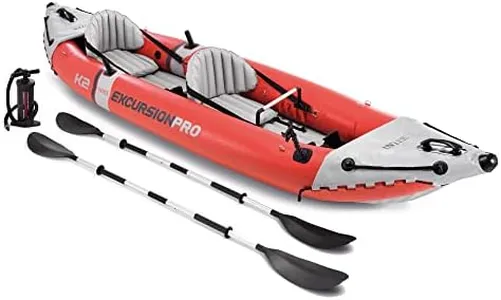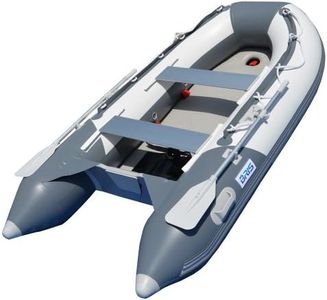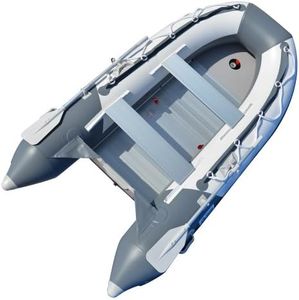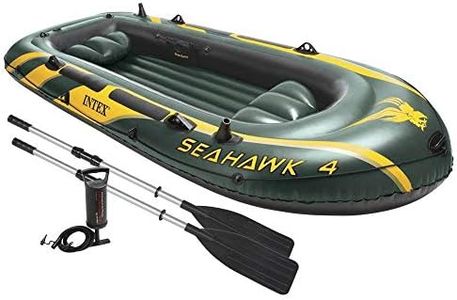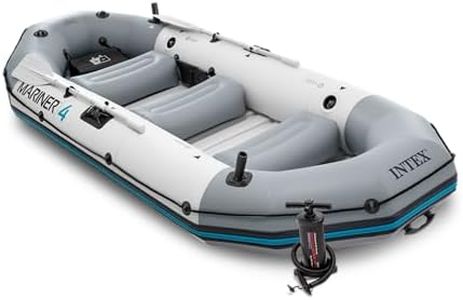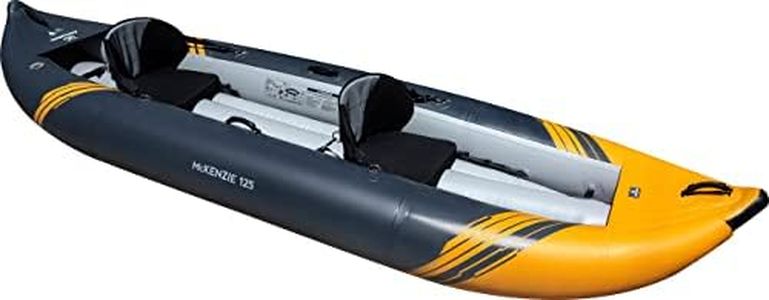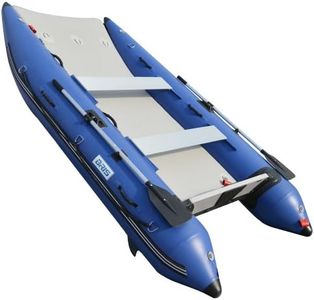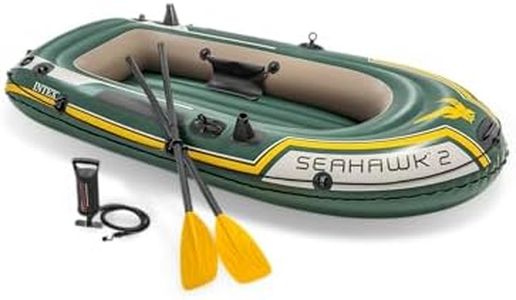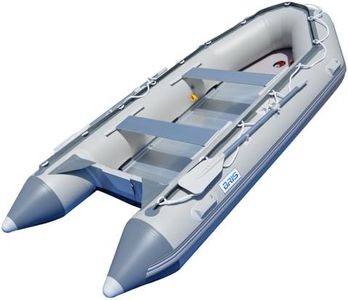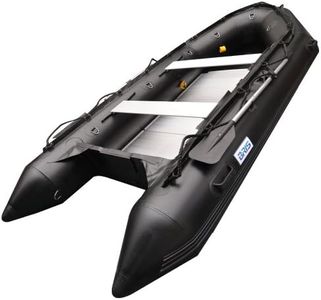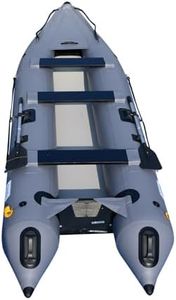We Use CookiesWe use cookies to enhance the security, performance,
functionality and for analytical and promotional activities. By continuing to browse this site you
are agreeing to our privacy policy
10 Best Inflatable Boats
From leading brands and best sellers available on the web.Buying Guide for the Best Inflatable Boats
Choosing the right inflatable boat can transform your time on the water, whether you're looking for a vessel for leisure, fishing, or adventure. Inflatable boats come in many forms and sizes, so it's important to think carefully about how you'll use the boat, how many people or how much gear you need to carry, and where you'll be using it—such as lakes, rivers, or the sea. By understanding the main features and picking those that match your needs, you'll end up with a safe and enjoyable craft that's just right for you.Boat Size and CapacityBoat size refers to the overall length and width of the inflatable boat, and capacity indicates how many people or how much weight it can safely carry. This spec is crucial because it determines comfort, safety, and how much cargo you can bring along. Inflatable boats range from small, single-person models to large boats that can hold several adults and gear. If you plan to use the boat alone or for short outings, a smaller boat is easier to handle and transport. For family trips or carrying equipment, a larger boat with higher capacity is better. Think about the maximum number of people and the type of activities, then choose the size that comfortably fits your needs.
MaterialThe material of an inflatable boat affects its durability, weight, and resistance to punctures or UV damage. The most common materials are PVC and Hypalon, each with benefits and trade-offs. PVC boats tend to be lighter and less expensive, but may be less resistant to sun and extreme temperatures. Hypalon boats are generally tougher but usually heavier. If you want a boat for occasional use in milder conditions, PVC works well. For frequent use or harsher environments, Hypalon is a better long-term choice.
Floor TypeThe floor type determines how rigid and stable the surface inside the boat is. Options include slatted floors, inflatable air decks, and rigid aluminum or plywood floors. Slatted floors are lightweight and pack down small, making them easy to transport, but they provide less stability. Inflatable air decks offer a good balance of comfort and ease of setup, while rigid floors give the most stability and are best for standing or moving around. Your choice depends on how portable you need the boat to be and what activities you'll do inside it—fishing or diving often requires the extra rigidity of a solid or air deck floor.
Hull ShapeThe shape of the hull determines how the boat handles in the water, influences speed, stability, and how it deals with waves. Flat-bottom hulls are stable and easy to maneuver in calm water, making them good for gentle rivers or lakes. V-shaped hulls cut through waves better, providing smoother rides and better performance in choppy conditions. If you're mostly exploring calm, shallow waters, a flat-bottom is suitable, but if you expect rougher water or want better handling at higher speeds, a V-hull is a smarter pick.
Number and Type of Air ChambersAn inflatable boat usually has several separate air chambers to improve safety. If one chamber is punctured, the others keep the boat afloat. More chambers mean greater safety, especially on open or busy waterways. Check whether the boat offers three or more chambers and if they're positioned around the main sides and floor. For casual, protected waters, two or three chambers may be enough, but for peace of mind on bigger adventures or with more people aboard, more chambers are always better.
Motor CompatibilityMany inflatable boats are designed for use with small outboard motors, which can make longer journeys easier or allow you to fish in more spots. Check the maximum motor size (in horsepower) the boat is rated to handle, as well as whether a motor mount is included or available. If you'll use paddles only, this spec matters less. If you want the option to add a motor—either now or in the future—choose a boat that's rated for the size and type of motor that suits your plans.
Portability and StoragePortability is about how easy it is to transport and store the inflatable boat when not in use. Consider how small the boat packs down, its weight, and whether it includes a carrying bag or handles. If you lack storage space or want to carry the boat by car or on your back, a lighter and more compact model is ideal. If you have a dedicated storage spot or plan to keep the boat inflated much of the time, this is less important.
